Adding a greenhouse to your garden is a great way to expand your growing possibilities. But which vegetables grow best in a greenhouse?
In this article, we’ll tell you everything you need to know about the best greenhouse vegetables (plus some other greenhouse-loving plants) worth growing. We’ll also walk you through some common greenhouse questions and tell you which plants cannot be grown inside a greenhouse.
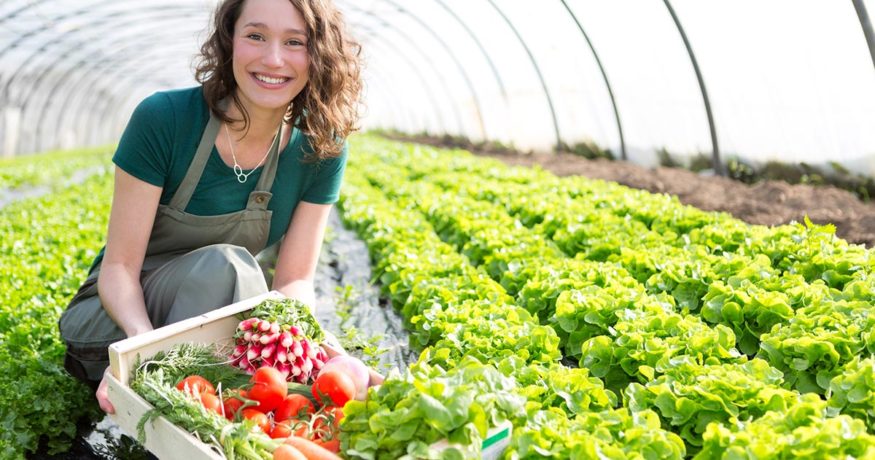
10 Best Vegetables to Grow in a Greenhouse
Whether you are planting for spring, summer, or fall, there are a handful of veggies you can always count on to grow well in the greenhouse environment.
Here are ten of the best greenhouse vegetables to try this year.
| Vegetable | Ideal Conditions | Special Requirements | Season |
|---|---|---|---|
| Tomatoes | Warm soil for germination, plenty of heat and sunlight, warm nights | Cage or trellising, consistent moisture, monthly fertilization | Spring through fall |
| Peppers | High daytime heat, higher nighttime temperatures | Moist, well-draining soil, monthly fertilization | Spring through fall |
| Leafy Greens | Cooler conditions, average air temperature around 60 degrees | Minimal upkeep, keep soil moist | Early spring and late fall |
| Cucumbers | Protective environment, soil temperature around 80 degrees for germination | Train up a trellis or cage, keep soil moist but not soggy, monthly fertilization | Summer through fall |
| Spinach | Cold-tolerant, can germinate at temperatures near freezing | Requires no extra fertilization, occasional watering | Late fall through spring |
| Microgreens | Indoors or greenhouse with minimal light requirement | Correct setup without soil or added nutrients, harvest in 10 days | Year-round |
| Herbs | Varied by type, generally prefer controlled humidity, light, and temperature | Tailor environment to specific herb needs, easy to care once established | Early spring and later for warm-season types |
| Beans | Warmer weather but not high temps, well-ventilated greenhouse | Little fertilizer, mulch back into soil at season’s end, trellising for pole beans | After last frost in spring |
| Eggplant | Hotter environment, similar to tomatoes and peppers | Trellising or caging, consistent moisture, monthly fertilization, hot soil for germination | Late spring when temperature reaches 70 degrees |
| Strawberries | Hot, dry growing conditions, pest management | Buy seedlings, keep temperatures below 60 degrees until flowers form | Early spring |
Tomatoes
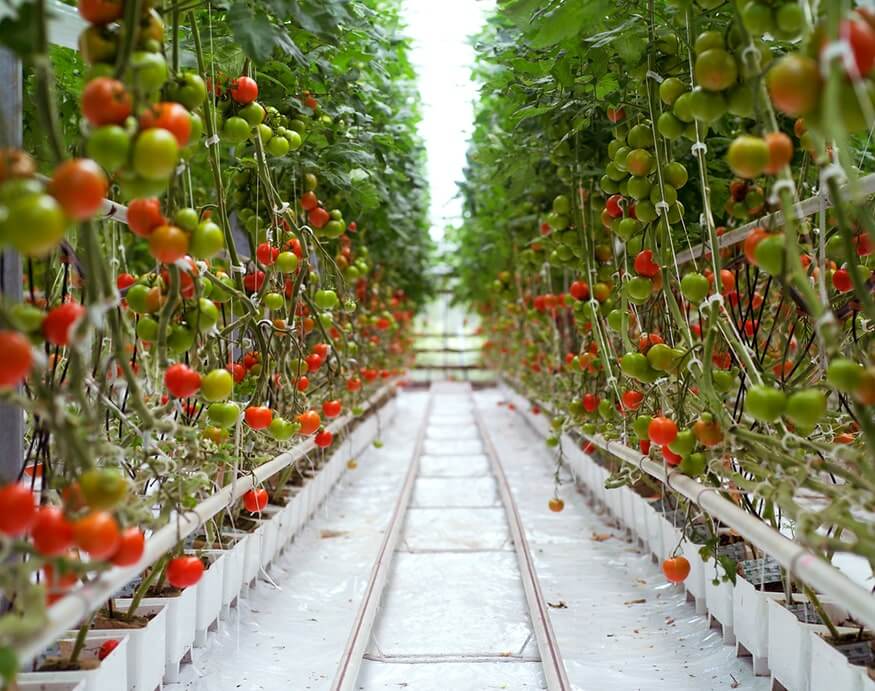
If you ask experts or hobbyists what to grow in your greenhouse, the first plant anyone is likely to bring up is the tomato.
Why? Because these popular nightshades like it hot ALL THE TIME.
Tomatoes need warm soil to germinate, lots of heat and sun during the day to grow well, and warm temps at night to thrive. A greenhouse offers all of this plus protection from rain and excess moisture that can cause nutrient deficiency and fungal infections in these fragile plants.
In the protected environment of a greenhouse, tomatoes are easy to grow. Most varieties will need a cage or trellising for support but otherwise require only consistently moist soil and monthly fertilizer treatments.
Tomatoes are best sown in the greenhouse when soil temps jump above 60 degrees in the spring. With proper ventilation, they will thrive in the hot summer temperatures and produce well into the fall.
Learn more: Growing tomatoes indoors
Peppers
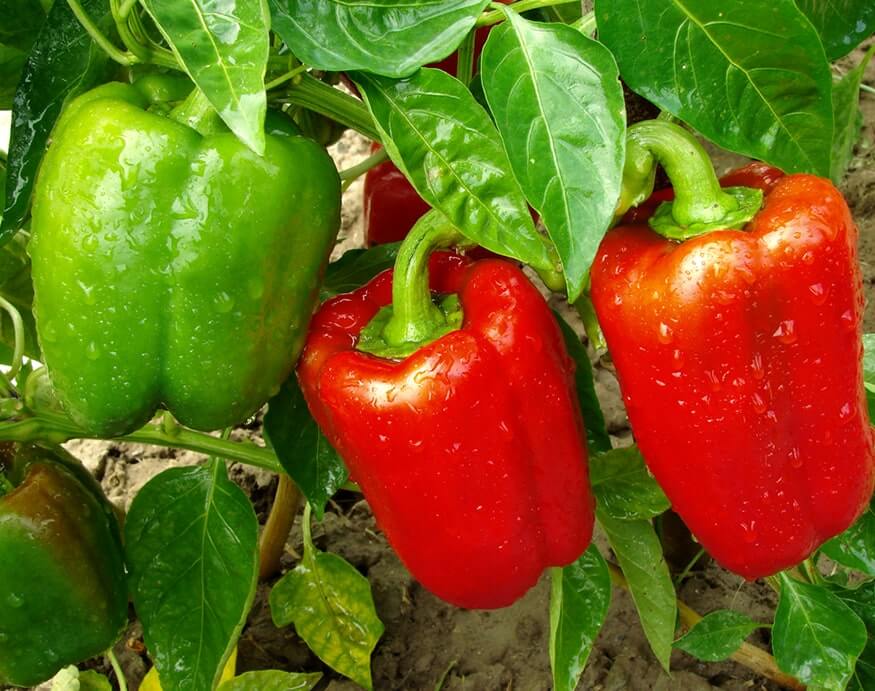
Peppers are another nightshade that likes it hot and does well in greenhouses.
Like tomatoes, these plants thrive in the daytime heat and enjoy higher nighttime temperatures. How hot you let your greenhouse get can even affect how hot your peppers taste when you harvest them.
Peppers are compact plants that will do well planted in the ground or in containers in your greenhouse. They don’t require any special care outside of moist, well-draining soil and monthly fertilization.
Pepper seeds need hot soil to germinate (80 degrees is optimal), so it is best to sow your seeds indoors or on a heating pad. Once temps have stabilized in the spring, transfer the sprouts to the greenhouse. Peppers will produce throughout the hot summer months and into the fall.
All peppers grow well in greenhouses, but here are some especially easy varieties for novice gardeners:
- Jalapenos
- Bell Peppers
- Serranos
- Anaheims
Leafy Greens
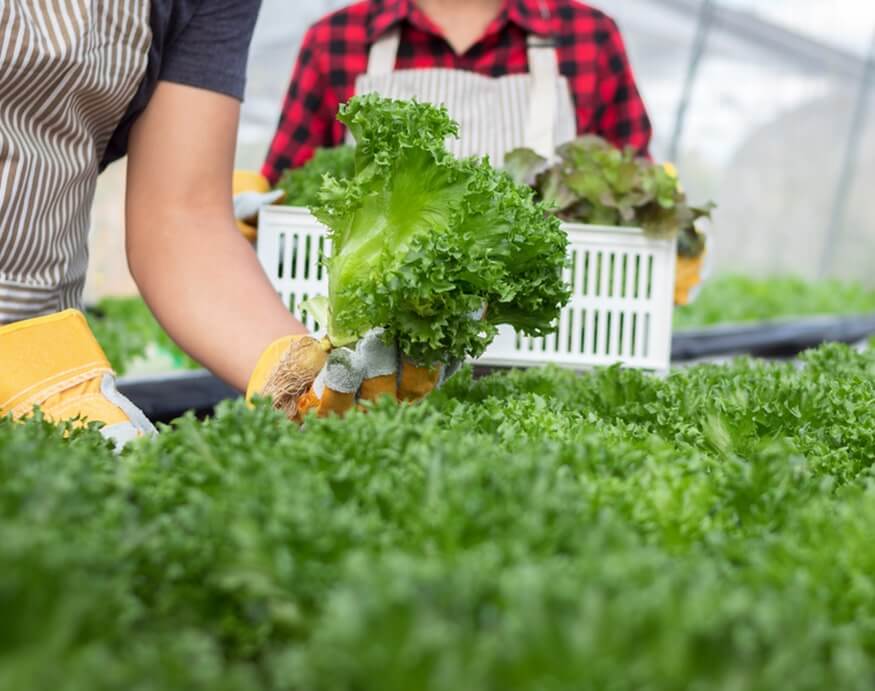
You don’t have to wait for the weather to warm up to enjoy your greenhouse. Some plants, like lettuce and other leafy greens, prefer to grow in cool weather.
Leafy greens grow best when the average air temperature is 60 degrees. For most climates, moderate days like this are hard to come by. Lettuce planted outside in the spring or fall is likely to endure just as many snow days as hot days.
By planting your greens in your greenhouse in the early spring and late fall, you can maximize the number of temperate days and not have to worry about snow crushing your delicate plants. Some greens, like kale and radishes, can be grown straight through the winter in many climates.
Plus, greens are super easy to grow. They don’t require much upkeep and don’t consume a lot of nutrients. Aside from keeping the soil moist and watching the temperature on sunny days, all you need to do is harvest those nutritious leaves.
Cucumbers
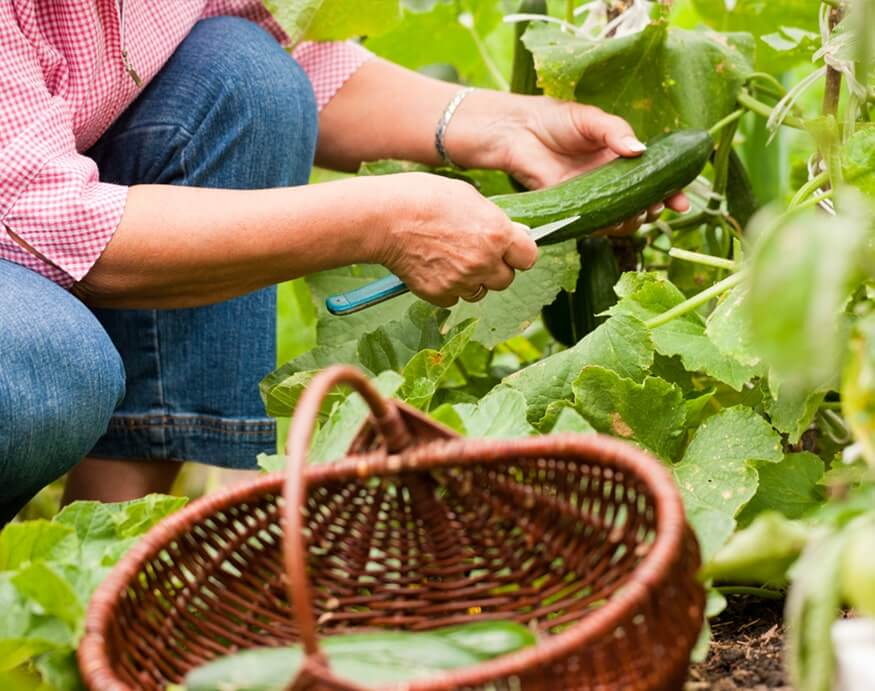
Some cucumber varieties can only grow in the protective environment, while others will benefit from the extended growing season that a greenhouse provides.
These vining plants are a little tricky to grow, but they will provide a bounty of fruit throughout the summer and into the fall with extra care.
Once the plants mature, train them up a trellis or cage to increase airflow and keep fruit off the ground. Keep the soil moist but not soggy, and add fertilizer once a month. Take care to keep the temperature above 65 degrees at night and below 90 during the day.
Cucumbers germinate fastest when the soil temperature is around 80 degrees. Although you can start them inside, seedlings do not transplant well. It is better to wait until later in the spring and direct sow seeds straight into the ground or pot.
Microgreens
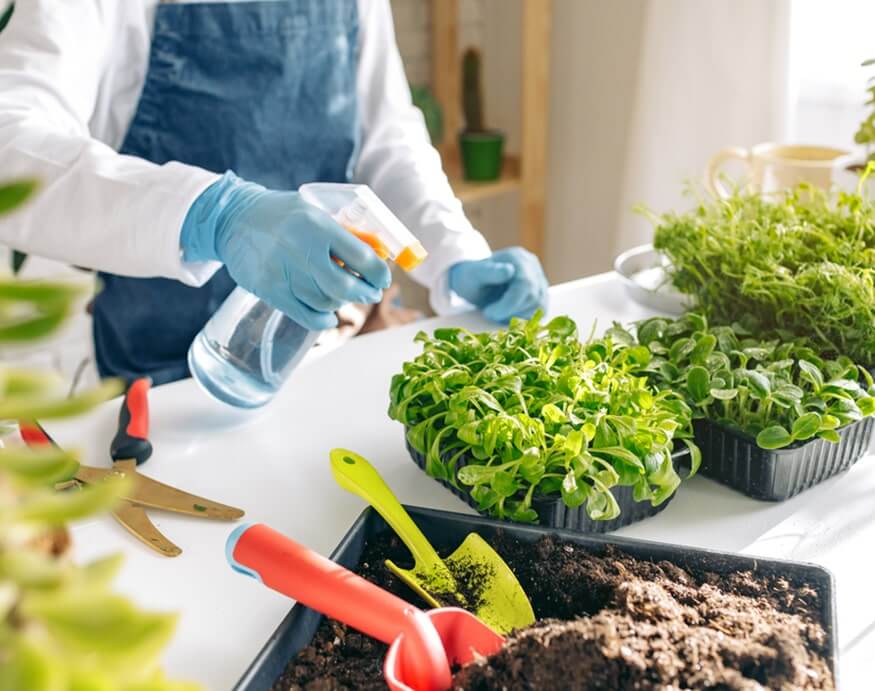
Microgreens are one plant variety that you have to grow indoors. Growing these crops requires sprouting hundreds of seeds (usually kale, broccoli, or mesclun) at once. This is the easiest to do in a special microgreens tray.
Microgreens don’t need much light since the sprouts are harvested before photosynthesis becomes necessary. This makes them easy enough to grow in the house. But if you are short on counter space or want to grow many microgreens at once, the greenhouse is the next best option.
Microgreens are simple to grow if you have the correct setup. They don’t require any soil or added nutrients and can be harvested just ten days after planting in the right conditions.
Spinach
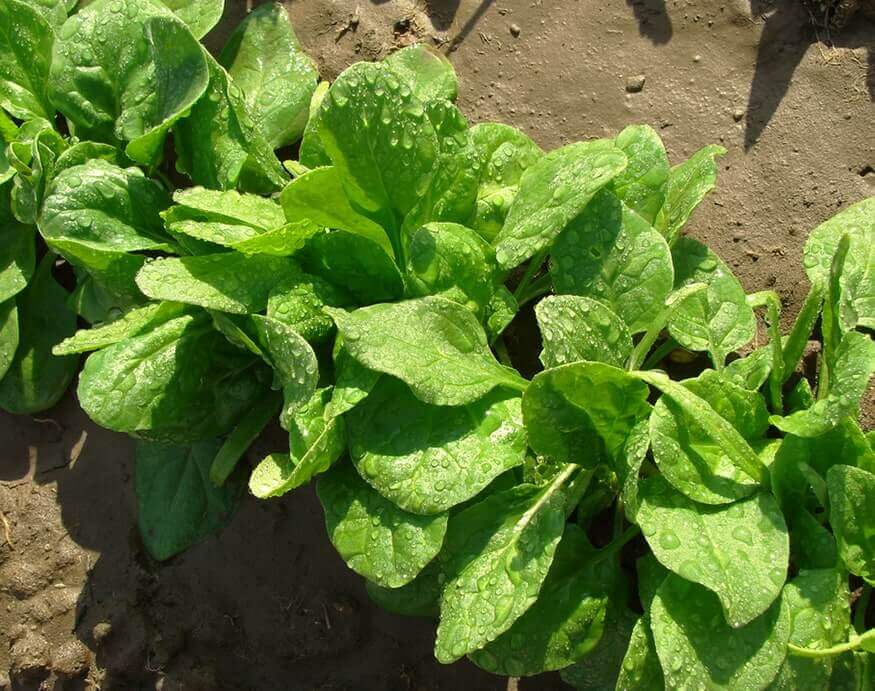
If you heat your greenhouse over the winter, your options for winter harvests are endless. But even if you don’t have a heater, you can still use your greenhouse to grow certain cold-tolerant vegetables between fall and spring. Spinach is one of the easiest crops to grow in an unheated greenhouse.
Spinach seeds can germinate at temperatures near freezing, which means you can sow spinach seeds in your greenhouse from late fall through spring. The greenhouse’s extra warmth during the day will keep the ground from freezing, while the structure will protect the growing plants from the snow. If you live in a frigid climate, you may need to add an extra layer of row covering to protect your spinach from freezing temperatures.
Spinach is super-simple to grow and requires no extra fertilization. During the cold months, your greenhouse will recycle moisture back into the soil, which means you will have to water occasionally.
Harvest your spinach throughout the winter and into the spring. Once the average temperature in your greenhouse gets too hot, your spinach will begin to bolt and produce flowers. At this point, harvest what remains and replace the greens with a warm-season crop.
Herbs
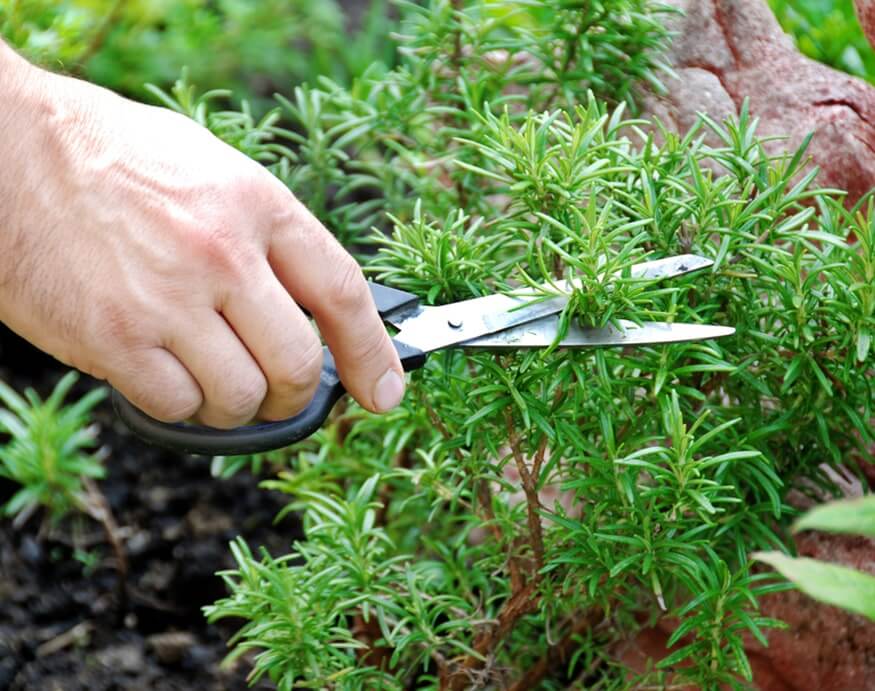
Herbs are finicky and fragile. Because of this, growing them in a greenhouse can increase your yield and make the process of caring for the plants simpler.
Not only does a greenhouse allow you to extend the herb growing season, but it gives you the power to tailor the humidity, light, and temperature to exactly what your herbs need. This does mean a little extra effort on your part, but once your herbs are established, they are relatively easy to care for and harvest.
Plant cold-tolerant herbs in early spring and hot-season types later on. Most varieties can be harvested throughout the summer and into fall.
Some of our favorite herbs to grow in a greenhouse are:
- Oregano
- Thyme
- Lavender
- Rosemary
- Sage
- Basil
- Tarragon
- Parsley
Beans
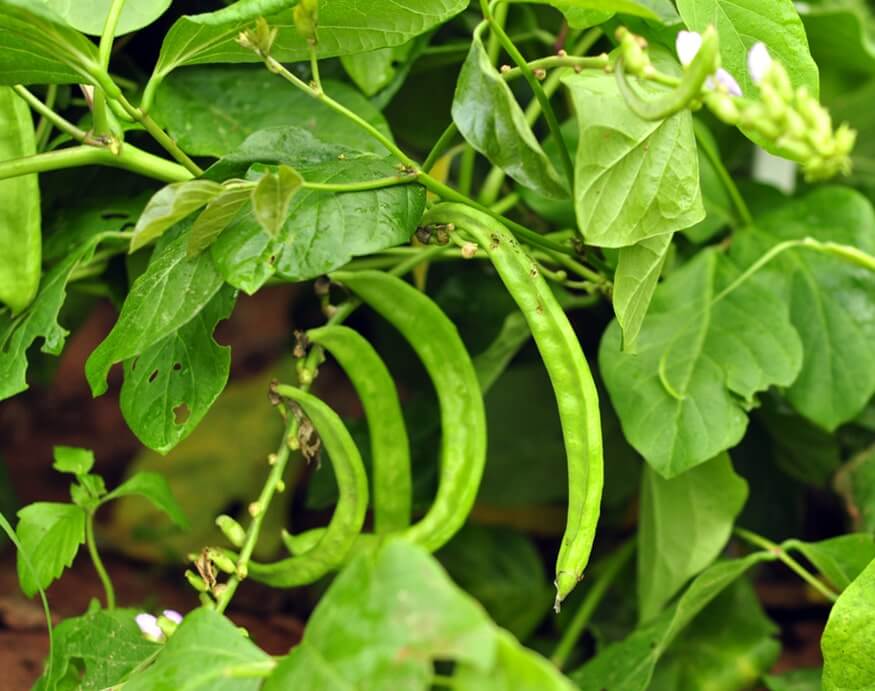
Beans prefer warmer weather but don’t produce well at high temps. They are an excellent choice for growing in a well-ventilated greenhouse in the summer.
Beans come in two types: pole and bush. Bush types, as you can imagine, grow low and bushy and require little maintenance. Pole beans need a trellis to climb and can take up significant vertical space in your greenhouse.
Like other legumes, beans fix their nitrogen and so require little in the way of fertilizer. You will need to mulch the plants back into the soil to give your next crop a nutrient boost at the end of the season.
You can plant beans as soon as the average temperature in your greenhouse reaches 50 degrees. However, the seeds need higher temps—closer to 80 degrees—to germinate, so start spring seeds indoors before planting in the greenhouse.
Eggplant
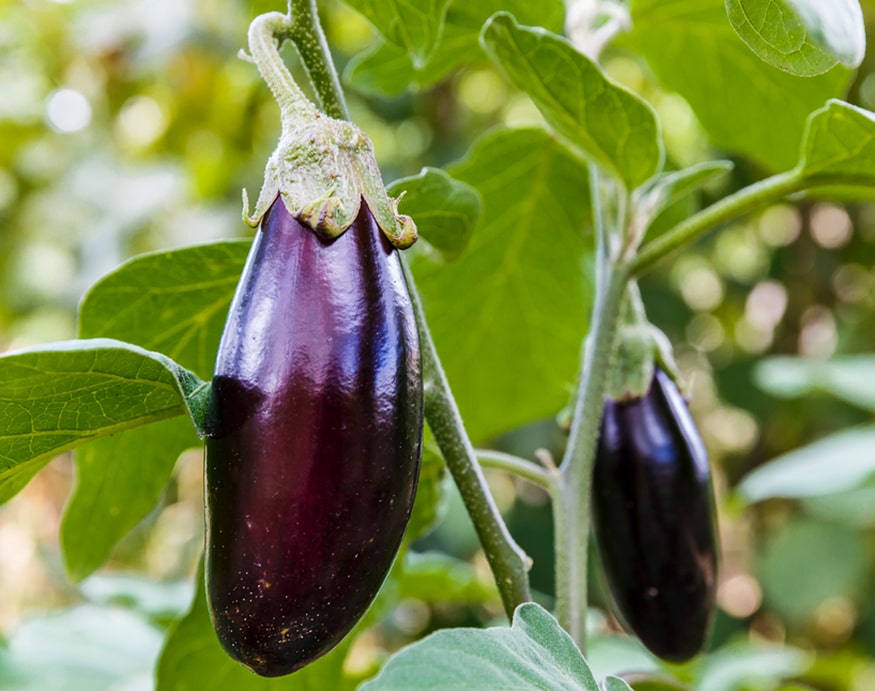
Like tomatoes and peppers, eggplant is a nightshade and thus does well in a greenhouse’s hotter environment.
Even if your area experiences long, hot summers, growing eggplant inside may be advisable to protect these plants from common diseases and pests.
Eggplant requires trellising or caging to support its long stems, similar to tomatoes. They like consistent moisture and need additional fertilizer about once a month. Like peppers, they need hot soil to germinate (80 to 90 degrees). Transfer sprouts into the greenhouse once the average temperature reaches 70 degrees in the late spring.
Strawberries
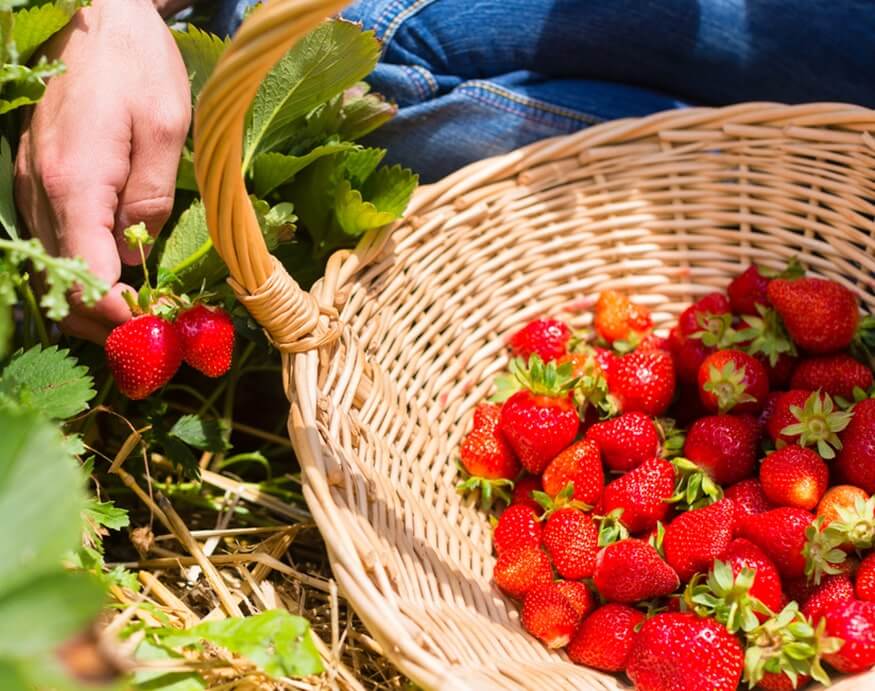
Strawberries prefer hot, dry growing conditions. You can achieve these requirements in a greenhouse. But the best reason to grow these tasty berries in a greenhouse is to keep pests at bay.
Potato bugs, beetles, and fruit fly larvae all love to chomp on fresh strawberries. By growing these delicate plants inside a greenhouse, you can significantly reduce pests’ damage and increase your yield.
Because strawberries take a long time to mature, it is best to buy seedlings from your local nursery and plant them in your greenhouse in early spring. Try to keep temperatures below 60 degrees until flowers form.
Vegetables to Avoid in a Greenhouse: Grains
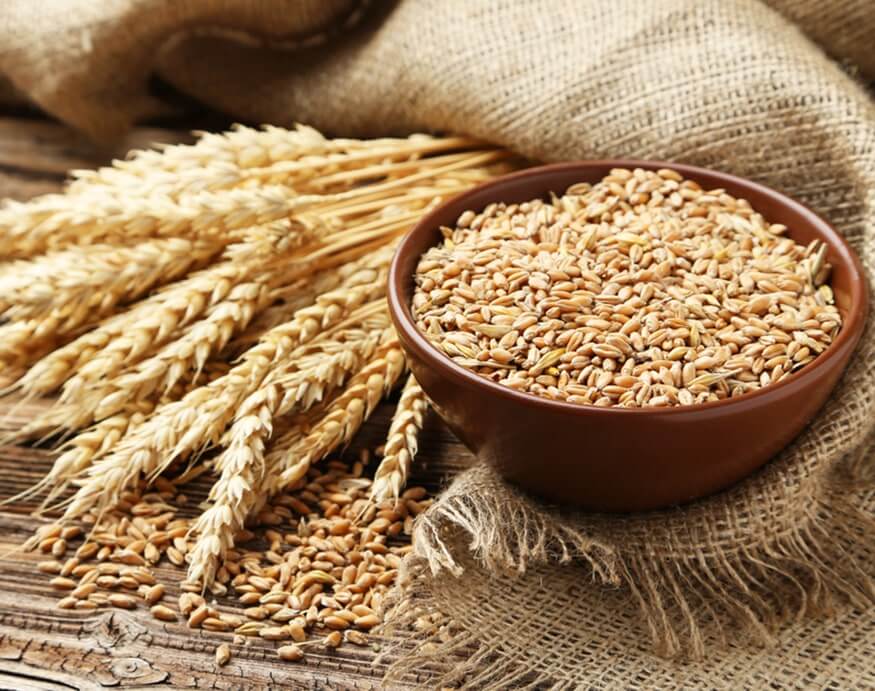
While technically not vegetables, grains are a common crop grown by commercial farmers and the occasional backyard enthusiast.
Unlike most vegetable crops, which are self-pollinated or pollinated by bugs, all grass species need wind pollination. This means that crops such as corn must be grown outdoors if you plan to harvest the grains.
Some common grains that are not suited for life in a greenhouse are:
- Wheat
- Oats
- Millet
- Corn
- Barley
Other Plants That Do Well in a Greenhouse
Vegetables aren’t the only plants that can benefit from a controlled, indoor environment. Here are a few more plant types to consider growing in your greenhouse:
- Flowers (native and exotic)
- Ferns
- Orchids
- Houseplants
- Citrus trees
- Pineapple bushes
- Succulents
Why Do Plants Grow Better In a Greenhouse?
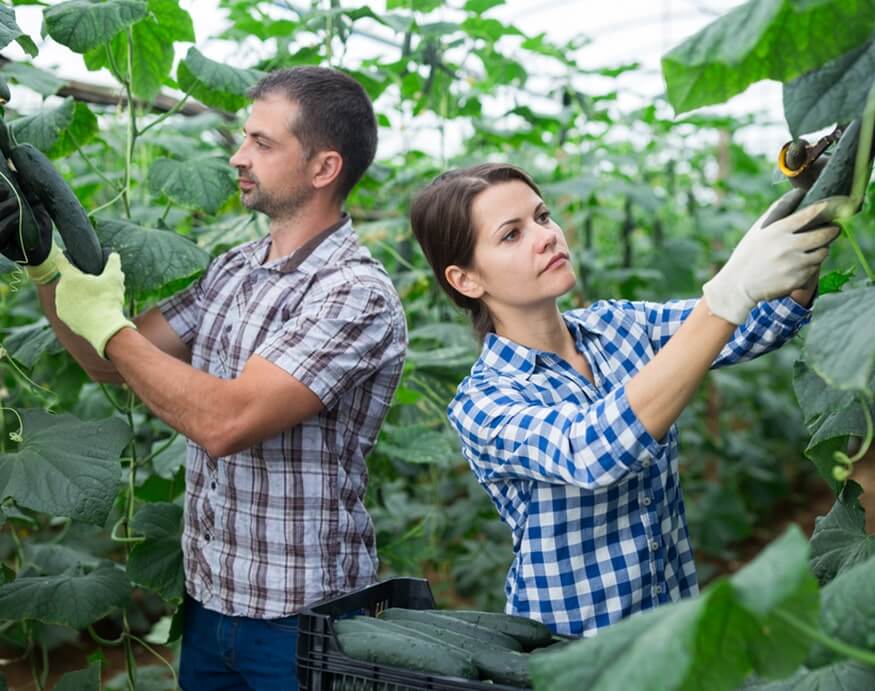
There are two main reasons why many plants grow better in a greenhouse.
The first has to do with control. Indoor environments give you much better control over temperature, humidity, and airflow. But unlike inside your home, a greenhouse still allows your plants to receive a bountiful amount of sunlight.
The second reason plants grow better in greenhouses has to do with the protection the plants receive. Not only are greenhouse vegetables protected from hail, snow, wind, and other damaging weather, but they are also less prone to pests. Greenhouses also provide a buffer against fluctuating temperatures and freezing conditions.
You can learn more about why plants grow better in greenhouses here.
Want a mini greenhouse in your house? You might be interested in the Aerogarden.
FAQ
Can You Grow Vegetables Year Round in a Greenhouse?
Yes, you can grow vegetables year-round in a greenhouse, but the specifics of what you can grow depends on what tools you are willing to use.
With heaters, grow lights, and fans, you can grow just about any vegetable in your greenhouse any time of year. But for the average homeowner, it is much more cost-effective to grow hot-season crops in the summer and cold-tolerant veggies in the winter.
With some added protection from row covers and the right crop selection, it is possible to grow fresh produce in your greenhouse, even in the dead of winter in most climates.
How Do Plants Pollinate in a Greenhouse?
Many plants are self-pollinating, which means they don’t need a lot of help to produce fruit, even in a greenhouse. All you have to do to ensure a successful harvest of these types of plants, including tomatoes, peppers, eggplants, and beans, is to give the plant a gentle shake every few days or use a fan to create a breeze.
For plants that require bees or other bugs to pollinate, you’ll have to do a little more work to help them produce in a greenhouse. For these types, you’ll need to use a paintbrush or Q-Tip to transfer pollen from male flowers to female flowers throughout the season.
In the summer, when doors and windows are left open during the day, you may get bumblebees or pollinating flies to visit your greenhouse. Placing flowering plants near these openings will increase the likelihood of these bugs helping out.
Are Some Greenhouses Better than Others?
There are a huge variety of backyard greenhouses on the market. Some are small enough to fit on your deck and have a flexible yet sturdy plastic structure. Others require much more space and take hours or days to construct.
The Wrap Up
You can grow almost all veggies in a greenhouse, but these ten crops take the cake when it comes to the best greenhouse vegetables.
For the spring and summer season, consider tomatoes, peppers, eggplant, cucumbers, microgreens, herbs, beans, and strawberries. In the winter and shoulder seasons, look to spinach and leafy greens to keep you flush in fresh produce even as the snow falls outside.
Have questions about growing greenhouse vegetables? Comment below, and we’ll find the answers.